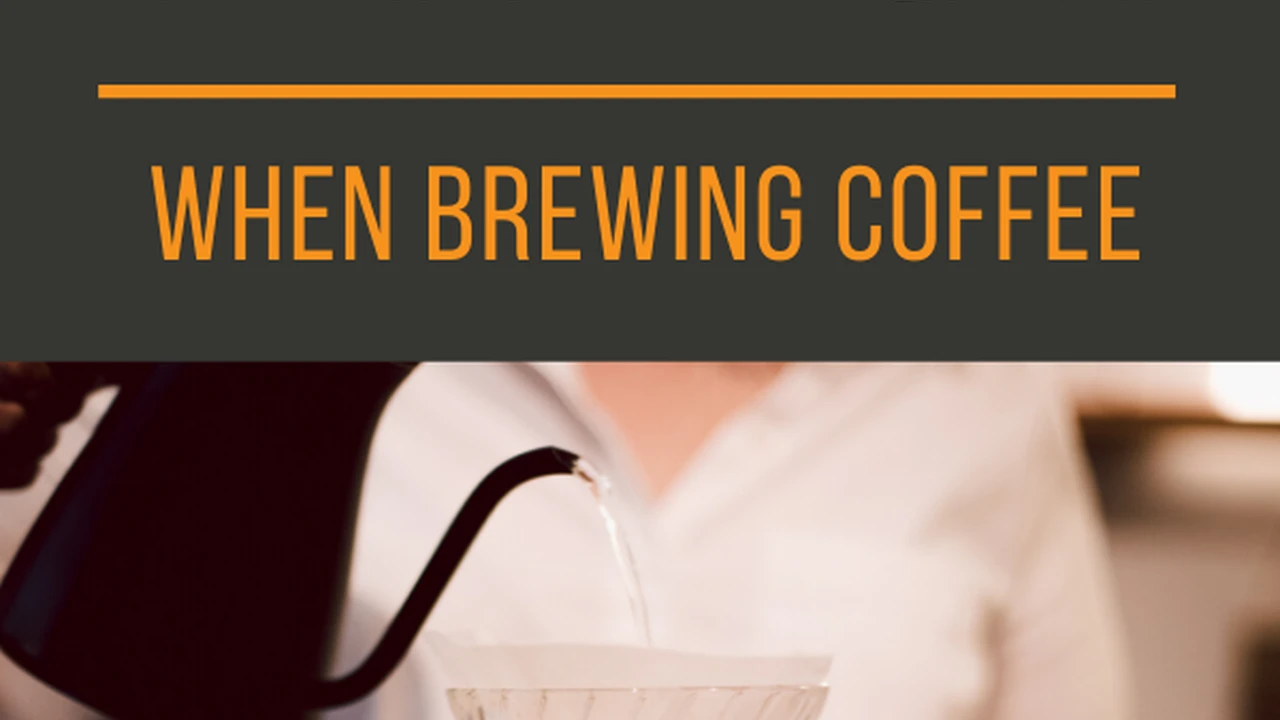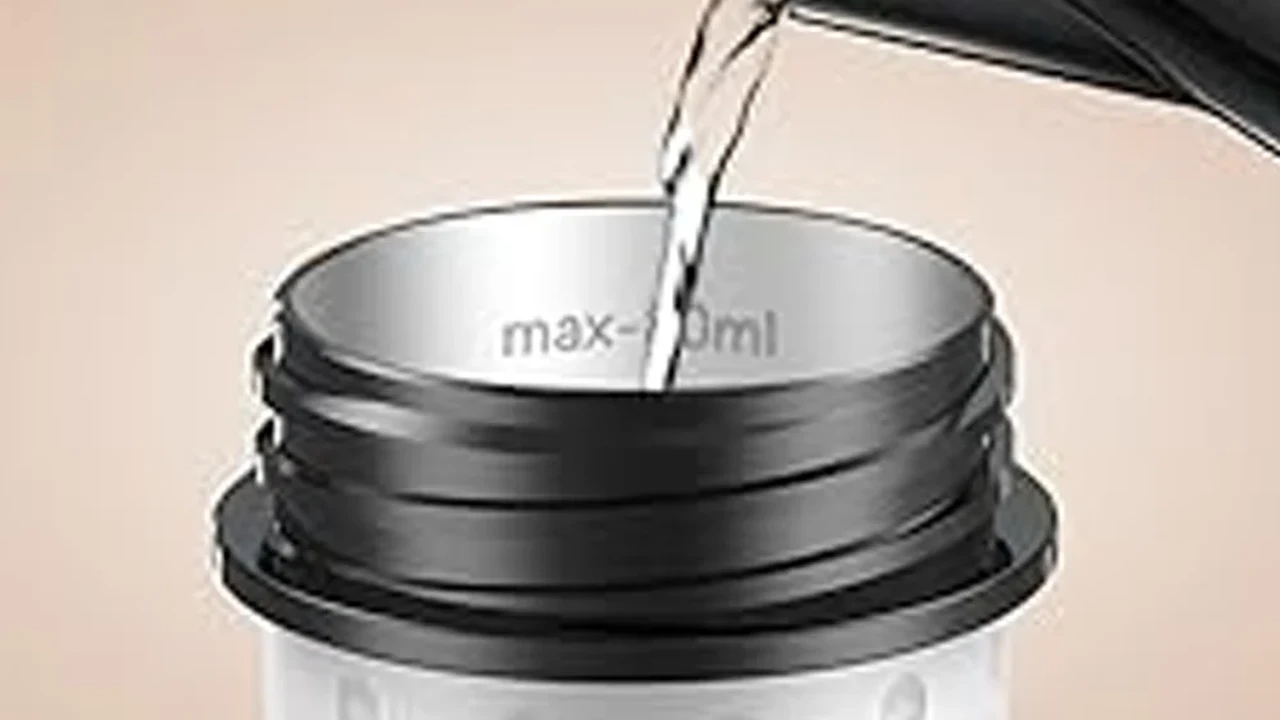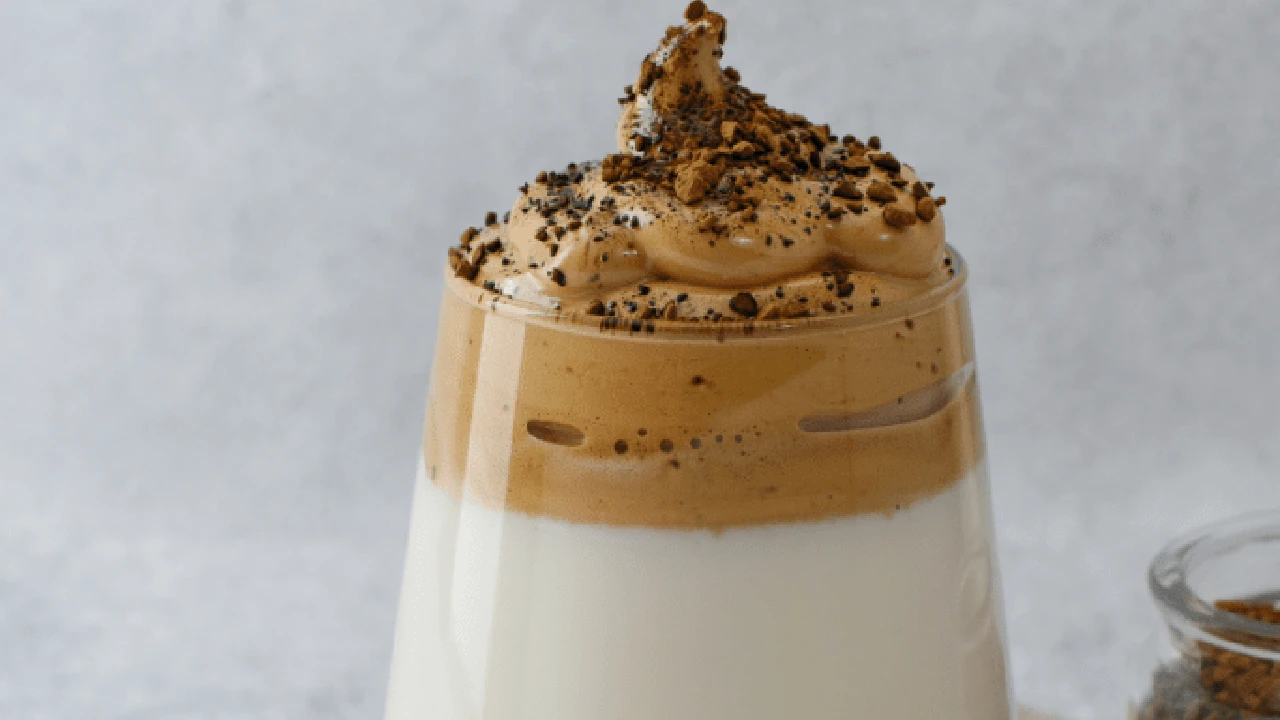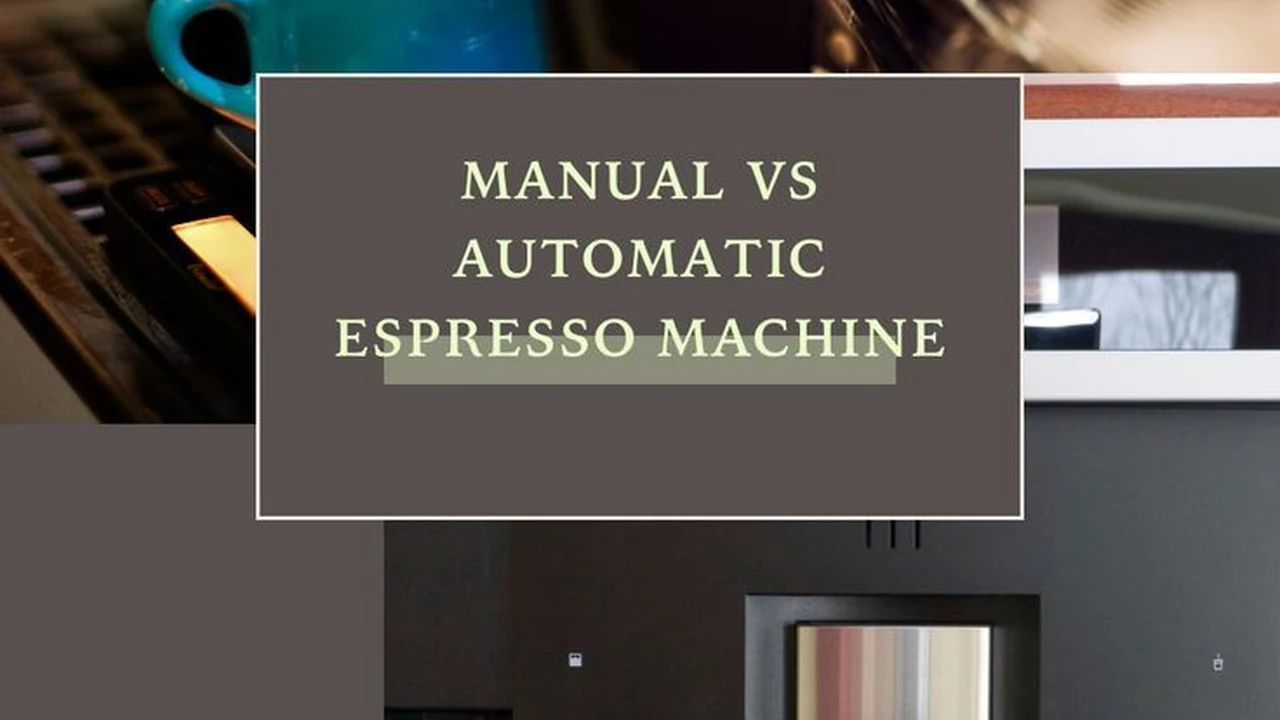Coffee Brewing Mistakes to Avoid for Better Taste
Identify and correct common coffee brewing mistakes. Improve your technique for consistently delicious results.

Coffee Brewing Mistakes to Avoid for Better Taste
Hey there, fellow coffee lovers! We all chase that perfect cup, right? That rich, aromatic, soul-satisfying brew that kickstarts our day or offers a comforting pause. But let's be honest, sometimes our home-brewed coffee falls a little flat. It might be too bitter, too weak, or just… not quite right. Don't worry, you're not alone! Even seasoned home baristas make mistakes. The good news is, most common brewing blunders are easily fixable. By understanding what can go wrong and how to tweak your process, you'll be well on your way to consistently delicious results. Let's dive into the most common pitfalls and how to avoid them, ensuring every sip is a winner.
Using Stale Coffee Beans The Freshness Factor
This is probably the number one culprit for disappointing coffee. Coffee beans are a perishable product, and once roasted, they start to lose their volatile aromatic compounds. Think of it like fresh bread – it's best right out of the oven. The same goes for coffee. Oxygen, light, heat, and moisture are the enemies of freshness.
Why Freshness Matters for Coffee Flavor
When coffee beans are roasted, they undergo complex chemical reactions that create thousands of flavor and aroma compounds. These compounds are delicate and degrade over time. As they degrade, the coffee loses its vibrancy, sweetness, and nuanced flavors, often resulting in a flat, cardboard-like, or overly bitter taste. The ideal window for brewing coffee is typically within 2-4 weeks of its roast date. Beyond that, while still drinkable, you'll notice a significant drop in quality.
How to Ensure Your Coffee Beans are Fresh
- Check the Roast Date: Always look for a 'roasted on' date, not a 'best by' date. A 'best by' date is often just a guess and doesn't tell you when the coffee was actually fresh.
- Buy Whole Beans: Ground coffee stales much faster than whole beans because it has a larger surface area exposed to oxygen. Grind just before brewing!
- Buy in Smaller Quantities: Don't buy a huge bag of coffee that will sit around for months. Purchase enough to last you 1-2 weeks.
- Proper Storage: Store your beans in an opaque, airtight container at room temperature, away from direct sunlight and heat. Avoid the fridge or freezer for daily use, as condensation can introduce moisture.
Incorrect Grind Size The Foundation of Flavor
The grind size of your coffee is incredibly important, arguably as important as the beans themselves. It dictates how quickly water can extract flavors from the coffee grounds. Too fine, and you'll over-extract, leading to bitterness. Too coarse, and you'll under-extract, resulting in a weak, sour, or watery brew.
Matching Grind Size to Brewing Method
Every brewing method requires a specific grind size for optimal extraction. Here's a quick guide:
- Extra Fine (Powder-like): Turkish Coffee
- Fine (Sugar-like): Espresso
- Medium-Fine (Table Salt): AeroPress, Moka Pot
- Medium (Sand-like): Drip Coffee Makers, Pour Over (e.g., Chemex, V60)
- Medium-Coarse (Rough Sand): Siphon, French Press (if you prefer less sediment)
- Coarse (Sea Salt/Breadcrumbs): French Press, Cold Brew
The Importance of a Quality Coffee Grinder
This is where many home baristas fall short. A cheap blade grinder 'chops' coffee beans inconsistently, creating a mix of fine dust and large chunks. This leads to uneven extraction – the fine particles over-extract, and the coarse ones under-extract, resulting in a muddy, unbalanced cup. A burr grinder, on the other hand, grinds coffee uniformly, allowing for consistent extraction and a much better-tasting brew.
Recommended Burr Grinders for Home Use:
Entry-Level (Great Value):
- Baratza Encore Conical Burr Coffee Grinder: This is a fantastic entry-level electric burr grinder, widely recommended for its consistent grind quality across various brew methods (drip, pour-over, French press). It's durable and easy to use.
- Use Case: Daily drip coffee, pour-over, French press. Not ideal for espresso due to limited fine adjustments.
- Comparison: Far superior to blade grinders. Offers consistent grind for most home brewing.
- Price: Approximately $170 USD.
- Capresso Infinity Conical Burr Grinder: Another solid choice for beginners, offering a wide range of grind settings from fine to coarse. Known for its quiet operation.
- Use Case: Versatile for drip, pour-over, French press, and even some coarser espresso grinds.
- Comparison: Similar performance to the Baratza Encore, often a matter of personal preference for design and noise.
- Price: Approximately $130 USD.
Mid-Range (Enhanced Performance):
- Fellow Ode Brew Grinder (Gen 2): Designed specifically for brewed coffee (drip, pour-over, French press, cold brew), not espresso. It features large flat burrs for exceptional grind consistency and minimal retention.
- Use Case: Dedicated to non-espresso brewing methods where precision and clarity are paramount.
- Comparison: Offers a noticeable step up in grind quality for brewed coffee compared to entry-level conical burrs. Sleek design.
- Price: Approximately $345 USD.
- Baratza Virtuoso+ Conical Burr Grinder: An upgrade from the Encore, offering more precise grind adjustments and a more powerful motor. A great all-rounder.
- Use Case: Excellent for all brewed coffee methods, and can even handle some non-pressurized espresso baskets.
- Comparison: Better build quality and more precise adjustments than the Encore, making it more versatile.
- Price: Approximately $250 USD.
High-End / Espresso Focused (Precision and Control):
- Niche Zero Grinder: A highly popular single-dose conical burr grinder known for its exceptional grind quality, minimal retention, and versatility for both espresso and brewed coffee.
- Use Case: Ideal for home baristas who switch between espresso and other brew methods, or those who value single-dosing.
- Comparison: Offers cafe-quality grind consistency in a compact home package. Very low retention means no wasted coffee.
- Price: Approximately $600-700 USD (often sold directly from the UK).
- Eureka Mignon Specialita: A popular choice for espresso enthusiasts. It's a stepless grinder, allowing for incredibly fine adjustments, crucial for dialing in espresso.
- Use Case: Primarily for espresso, but can also do coarser grinds for other methods.
- Comparison: Known for its quiet operation, speed, and precise espresso grinding capabilities.
- Price: Approximately $550-650 USD.
Using the Wrong Water Temperature The Heat is On
Water temperature plays a critical role in coffee extraction. If the water is too hot, it can scorch the coffee grounds, leading to a bitter, burnt taste. If it's too cold, it won't extract enough flavor, resulting in a weak, sour, or underdeveloped brew.
The Golden Temperature Range for Coffee Brewing
The Specialty Coffee Association (SCA) recommends a brewing temperature between 195°F and 205°F (90°C and 96°C). This range allows for optimal extraction of desirable flavors without over-extracting bitter compounds.
How to Control Water Temperature
- Electric Kettles with Temperature Control: These are a game-changer for pour-over and French press. They allow you to set the exact temperature.
- Recommended Product: Fellow Stagg EKG Electric Pour-Over Kettle. It offers precise temperature control, a gooseneck spout for controlled pouring, and a sleek design.
- Use Case: Perfect for pour-over, AeroPress, French press, and any method requiring precise temperature.
- Comparison: More precise and stylish than basic electric kettles.
- Price: Approximately $160 USD.
- Thermometer: If you have a regular kettle, use a kitchen thermometer to check the water temperature before pouring.
- Boil and Wait: If you don't have a temperature-controlled kettle, bring your water to a full boil, then let it sit for 30-60 seconds off the heat. This usually brings it down into the ideal range.
Incorrect Coffee to Water Ratio The Balance Act
This is often overlooked but is fundamental to a balanced cup. Too much coffee for the amount of water, and your brew will be overly strong and potentially bitter. Too little coffee, and it will be weak and watery.
The Ideal Coffee to Water Ratio
The generally accepted 'golden ratio' is 1:15 to 1:18 (coffee to water by weight). This means for every 1 gram of coffee, you use 15 to 18 grams of water. For example, if you're brewing with 20 grams of coffee, you'd use 300-360 grams of water.
Why Weighing is Better Than Scooping
Coffee scoops are notoriously inconsistent. The density of coffee changes based on roast level and grind size, meaning a 'scoop' of dark roast might weigh differently than a 'scoop' of light roast. Using a scale ensures precision and repeatability.
Recommended Coffee Scales:
- Hario V60 Drip Coffee Scale: A popular and affordable option that measures both weight and time, essential for pour-over brewing.
- Use Case: Ideal for pour-over, drip coffee, and general kitchen use.
- Comparison: Good balance of features and price for beginners.
- Price: Approximately $50 USD.
- Acaia Pearl Model S Coffee Scale: A premium, highly precise scale with advanced features like flow rate display and app connectivity. For serious enthusiasts.
- Use Case: Professional-level precision for all brewing methods, especially pour-over and espresso.
- Comparison: Top-tier accuracy and features, but at a higher price point.
- Price: Approximately $270 USD.
Poor Water Quality The Unsung Hero
You might have the best beans, the perfect grind, and the right temperature, but if your water tastes bad, your coffee will too. Coffee is 98% water, so its quality significantly impacts the final taste.
What Makes Good Brewing Water?
Ideal brewing water is clean, fresh, odorless, and has a balanced mineral content. Too many minerals (hard water) can lead to scale buildup in your equipment and dull flavors. Too few minerals (distilled or reverse osmosis water) can result in flat, lifeless coffee because there aren't enough minerals to interact with the coffee compounds during extraction.
Improving Your Water Quality
- Filtered Tap Water: A simple Brita filter or a filter attached to your tap can remove chlorine and some impurities.
- Dedicated Water Filters: For serious coffee enthusiasts, consider a dedicated water filter system for your kitchen or even specific coffee brewing water recipes (e.g., Third Wave Water packets).
- Bottled Spring Water: If your tap water is particularly bad, good quality bottled spring water can be a temporary solution. Avoid distilled or purified water unless you plan to add minerals back in.
Neglecting Equipment Cleaning The Hidden Culprit
Old coffee oils and mineral deposits can build up in your brewing equipment, leading to off-flavors and reduced performance. That stale, bitter taste might not be your beans; it could be your dirty equipment.
Why Regular Cleaning is Essential
Coffee oils are sticky and can go rancid, imparting a bitter, unpleasant taste to your fresh brew. Mineral scale (especially in espresso machines and kettles) can affect heating elements and water flow, leading to inconsistent temperatures and extraction.
Cleaning Tips for Different Equipment
- Daily: Rinse your brewing device (French press, pour-over cone, AeroPress) thoroughly with hot water after each use. Wipe down your grinder.
- Weekly: Deep clean your brewing device with a mild, unscented dish soap. For espresso machine portafilters and baskets, use a dedicated coffee cleaner (e.g., Cafiza).
- Monthly/Quarterly: Descale your espresso machine, kettle, and drip coffee maker. Use a descaling solution specifically designed for coffee equipment or a mixture of white vinegar and water (check your manufacturer's instructions first).
Recommended Cleaning Products:
- Urnex Cafiza Espresso Machine Cleaning Powder: Essential for backflushing espresso machines and soaking portafilters to remove coffee oils.
- Use Case: Espresso machine maintenance.
- Comparison: Industry standard for espresso machine cleaning.
- Price: Approximately $15-20 USD.
- Urnex Dezcal Activated Scale Remover: A highly effective descaling solution for espresso machines, coffee makers, and kettles.
- Use Case: Removing mineral buildup from heating elements and water paths.
- Comparison: Safer and more effective than just vinegar for many machines.
- Price: Approximately $15-20 USD.
Improper Brewing Technique The Human Element
Even with all the right tools and ingredients, technique matters. Whether it's an uneven pour, incorrect stirring, or rushing the process, small errors can lead to big differences in taste.
Common Technique Mistakes and How to Fix Them
- Uneven Saturation (Pour Over): If you don't saturate all the coffee grounds evenly, some parts will over-extract, and others will under-extract. Use a gooseneck kettle for precise pouring and ensure all grounds are wet during the bloom phase.
- Rushing the Bloom (Pour Over/Drip): The 'bloom' is when hot water first hits the grounds, causing them to release CO2. This allows for better water penetration. Don't skip it! Pour a small amount of water to saturate the grounds, wait 30-45 seconds, then continue brewing.
- Incorrect Stirring (French Press): After adding water to your French press, a gentle stir helps ensure all grounds are saturated. However, over-stirring can create too many fines, leading to a muddy cup.
- Ignoring Brew Time: Every brewing method has an ideal contact time between coffee and water. Too short, and it's under-extracted; too long, and it's over-extracted. Use a timer!
Not Experimenting and Adjusting Your Brew
Coffee brewing isn't a one-size-fits-all science. Different beans, roast levels, and even environmental factors can influence the ideal brewing parameters. Sticking rigidly to one recipe without tasting and adjusting is a common mistake.
Becoming Your Own Coffee Scientist
- Taste, Taste, Taste: Pay attention to the flavors in your cup. Is it too sour (under-extracted)? Too bitter (over-extracted)? Too weak?
- Adjust One Variable at a Time: If your coffee isn't right, don't change everything at once. Adjust one thing – grind size, water temperature, or ratio – and then taste again.
- Keep a Brewing Journal: Note down your recipe (coffee weight, water weight, grind setting, temperature, brew time) and your tasting notes. This helps you replicate good results and diagnose problems.
- Don't Be Afraid to Deviate: The 'golden ratio' and temperature ranges are guidelines. Your personal preference might lead you to slightly different parameters, and that's perfectly fine!
By paying attention to these common brewing mistakes and making small adjustments to your routine, you'll notice a significant improvement in the quality of your home-brewed coffee. It's a journey of continuous learning and enjoyment. Happy brewing!
:max_bytes(150000):strip_icc()/277019-baked-pork-chops-with-cream-of-mushroom-soup-DDMFS-beauty-4x3-BG-7505-5762b731cf30447d9cbbbbbf387beafa.jpg)






